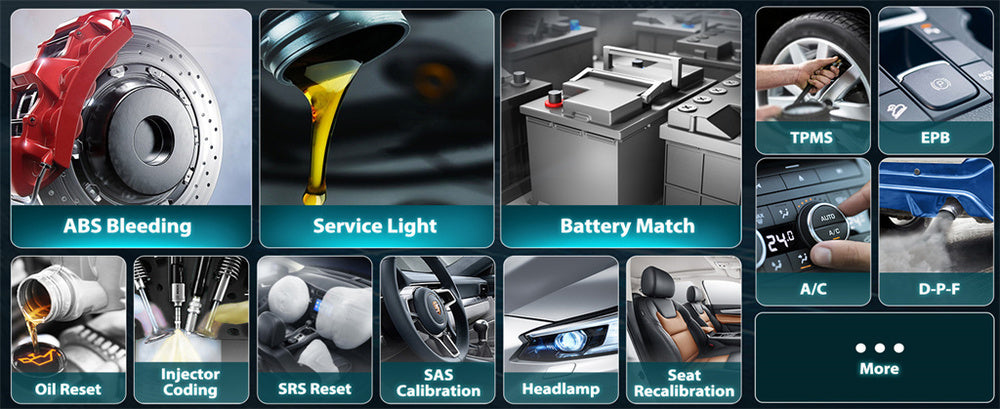The Exhaust Gas Recirculation (EGR) valve is critical in modern vehicle emission management systems. It reduces nitrogen oxide (NOx) emissions by rerouting some exhaust gases that are returned into the engine's combustion chamber.
However, the EGR valve can emerge as defective over the years, affecting vehicle performance and emissions. In this newsletter, we'll explore how to identify commonplace signs of a faulty EGR valve, the reasons behind these troubles, and how to restore them efficiently.
This guide aims to assist vehicle proprietors in diagnosing and resolving EGR valve issues, saving them from expensive upkeep and enhancing their car's efficiency.
What is the EGR Valve and Why Is It Important?
Before discussing the signs of a defective EGR valve, let's understand its reason. The EGR valve allows the quantity of exhaust gases to be manipulated and rerouted into the engine. These gases are recirculated to decrease the combustion temperature, which reduces the formation of nitrogen oxides (NOx), a dangerous pollutant. By decreasing NOx emissions, the EGR valve helps vehicles meet environmental guidelines.
However, because exhaust gases incorporate carbon and different particulates, over time, the EGR valve can become clogged or fail, compromising its characteristics. Understanding how the EGR valve works can help us better diagnose and fasten problems after they stand up.
When you observe your EGR valve is probably malfunctioning, using an OBD2 scanner can be a terrific first step in diagnosing the issue. These devices connect to your vehicle's onboard diagnostic system and may provide error codes that factor in the cause of the trouble without delay.
For example, the Foxwell NT809BT is a popular preference among automobile proprietors and mechanics alike. This Bluetooth-enabled scanner allows for actual-time diagnostics and will enable you to discover issues like a malfunctioning EGR valve by studying the trouble codes that cause the "Check Engine" light.
Common Symptoms of a Faulty EGR Valve

A defective EGR valve can cause several troubles that no longer most straightforwardly affect the automobile's performance; it can also cause its failing emissions exams. Here are the most common signs and symptoms of a malfunctioning EGR valve:
Rough Idle
A difficult idle is one of the first signs and symptoms that your EGR valve might be failing. If the valve is stuck open or closed, it can affect the air-to-gas ratio in the combustion chamber, causing the engine to run erratically at low speeds. You can also note the engine idling more or less, with fluctuating RPMs or maybe stalling.
Loss of Power
Another symptom of a malfunctioning EGR valve is a significant lack of power while accelerating. This is often due to unsuitable exhaust gasoline going with the flow or reduced combustion efficiency, which influences the engine's ability to supply electricity efficaciously. You may discover that your car is gradual or doesn't accelerate as quickly as it should.
Fuel Smell
A defective EGR valve can cause incomplete combustion, leading to an unusual gas odor. If you notice this scent coming out of your exhaust or inside the cabin, it could be a signal that the EGR valve is not working properly and gasoline isn't always burning completely.
Excessive Emissions
A malfunctioning EGR valve can accelerate nitrogen oxide (NOx) emissions because the valve isn't recirculating exhaust gases as it should. This not only harms the environment but can also cause your car to fail an emissions test. If your automobile releases extra smoke or emits a more potent odor than usual, it's a red flag that the EGR device can be compromised.
Engine Knock
If the EGR valve is caught within the closed function or is malfunctioning, the engine may revel in knocking or pinging noises. This occurs while combustion temperatures rise too high because of inadequate exhaust fuel recirculation. If left unchecked, this may cause significant harm to the engine over time.
Check Engine Light
The "Check Engine" mild is one of the maximum not unusual signs that something is inaccurate along with your automobile. A faulty EGR valve frequently triggers the engine management unit (ECU) to spark off and take a look at the engine light.
Using an OBD2 scanner, which includes the Foxwell NT809BT, lets you examine the diagnostic trouble codes (DTCs) and identify if the EGR valve is the foundation purpose of the trouble. This Bluetooth scanner offers instantaneous comments, saving you time and assisting you in subsequent steps.
Common Causes of EGR Valve Failure
The primary reason for EGR valve failure is the accumulation of carbon and soot within the valve and related additives. Here's a breakdown of the most commonplace reasons:
Carbon Buildup
Since the EGR valve is exposed to exhaust gases, carbon, and other combustion byproducts can build up through the years. This accumulation can clog the valve, making it difficult to open or near the well. As a result, the exhaust gases can't flow effectively, leading to performance troubles and terrible fuel performance.
Valve Wear and Tear
Over time, the EGR valve's components, such as the springs, seals, and diaphragms, can wear out because of nonstop use and tough working conditions. As these components degrade, the valve may also fail to function well, causing troubles such as wrong exhaust fuel recirculation or engine overall performance issues.
Temperature and Pressure Fluctuations
The EGR valve operates in an environment of high heat and stress, which could degrade its materials. Continuous exposure to those severe conditions can also cause elements to warp, crack, or lose their effectiveness.
How to Fix a Faulty EGR Valve
If you word any of the symptoms listed above, addressing the difficulty directly is essential. Here are a number of the most commonplace techniques for fixing a defective EGR valve:
Clean the EGR Valve
Cleaning the EGR valve is one of the most commonplace and cost-effective methods of repairing its functionality. You can use an EGR valve cleaner to dispose of carbon buildup and soot from the valve and its passages. The cleaning technique typically includes disconnecting the EGR valve, using the purifier, and then reassembling the parts. If executed efficaciously, cleansing can repair the valve's feature.
Replace the EGR Valve
If cleaning doesn't solve the issue, the EGR valve may need to be replaced. A tired or broken valve that cannot be cleaned correctly must be replaced with a brand-new or refurbished part. Be sure to pick out a perfect replacement valve that is compatible with your car's make and version.
Inspect the EGR System
In addition to the valve itself, checking the EGR machine's piping and sensors is essential. A clogged pipe or a malfunctioning sensor can contribute to poor valve overall performance. If these components are damaged, cleaning or changing them may be necessary to repair the machine's capability.

Preventing EGR Valve Failure
Preventing EGR valve failure is constantly more important than having to restore it. Here are a few pointers to help you keep away from issues with your EGR valve:
- Regularly Inspect the EGR System: Periodically test the EGR valve and its additives, mainly if your automobile has excessive mileage. Catching a problem early can prevent pricey maintenance later.
- Use High-Quality Fuel: Poor-quality fuel can lead to faster carbon buildup within the EGR valve. Choose gasoline that meets your automobile's specifications to lessen the possibility of clogging.
- Perform Regular Cleaning: Every 30,000 to 50,000 miles, remember to cleanse the EGR valve to prevent the accumulation of carbon deposits.
- Avoid Short Trips: Short trips where the engine doesn't attain the optimal temperature can cause carbon buildup. Travel longer distances when feasible to assist the engine in burning gasoline more efficiently.
Conclusion
The EGR valve is essential for lowering emissions and retaining engine performance. Over time, it can fail because of carbon buildup, wear and tear, or other problems.
By knowing the signs of a defective EGR valve, vehicle owners can diagnose and deal with the problem early, preventing further engine harm and enhancing car efficiency. Regular maintenance, including cleaning and inspection, can help keep the EGR valve functioning optimally and amplify the lifestyles of your vehicle.
FAQs
How to diagnose a faulty EGR valve?
To diagnose a faulty EGR valve, use an OBD2 scanner like the Foxwell NT809BT to check for error codes related to the EGR system. Look for symptoms such as rough idling, loss of power, increased emissions, or the check engine light. A physical inspection of the valve for carbon build-up can also confirm the issue.
How do I know if I need to replace my EGR valve?
If cleaning the EGR valve doesn’t resolve symptoms like rough idle, engine knocking, or excessive emissions, and diagnostic codes still persist, it’s likely time to replace the valve. Significant wear or damage to the valve components also warrants replacement.
How do you fix a bad EGR valve?
To fix a bad EGR valve, start by cleaning it to remove carbon deposits. If cleaning doesn’t resolve the issue, replace the valve with a new one. Ensure other components of the EGR system, such as pipes and sensors, are inspected and repaired if necessary.




Leave a comment
This site is protected by hCaptcha and the hCaptcha Privacy Policy and Terms of Service apply.